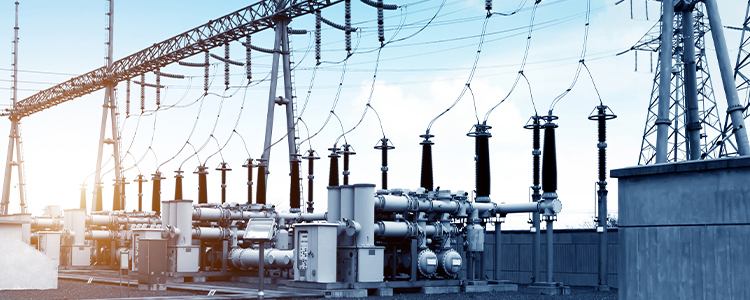- All
- Product Name
- Product Keyword
- Product Model
- Product Summary
- Product Description
- Multi Field Search


Views: 0 Author: Site Editor Publish Time: 2024-09-02 Origin: Site
Transformer substations are an essential part of the power system. They convert high-voltage electricity from power plants into lower-voltage electricity for distribution to homes and businesses. This article will discuss the different types of transformer substations, their components, and how to design and plan one.
A transformer substation is a facility where electricity is transformed from high voltage to low voltage. It is typically located near the point of use, such as a neighborhood or industrial park. The transformer substation consists of transformers, switchgear, and other equipment necessary to convert and distribute electricity.
Distribution substations are the most common type of transformer substation. They are typically used to supply power to a specific area, such as a neighborhood or industrial park. The transformer in a distribution substation converts high-voltage electricity from the transmission system into low-voltage electricity for distribution.
Transmission substations are used to convert high-voltage electricity from power plants into lower-voltage electricity for transmission over long distances. The transformer in a transmission substation is typically larger than in a distribution substation. Transmission substations also have switchgear and other equipment necessary for monitoring and controlling the electricity flow.
Switching stations are used to switch the electricity from one transmission line to another. They do not have transformers, but they do have switchgear and other equipment necessary for monitoring and controlling the electricity flow.
There are several components of a transformer substation:
The transformer is the heart of a transformer substation. It is used to convert high-voltage electricity from the transmission system into low-voltage electricity for distribution. The transformer consists of two coils of wire wrapped around a metal core. When electricity flows through one coil, it creates a magnetic field that induces a current in the second coil.
Switchgear is used to monitor and control the electricity flow in a transformer substation. It consists of circuit breakers, switches, and other equipment necessary for switching the electricity from one circuit to another.
Busbars are used to distribute electricity to different parts of a transformer substation. They are typically made of copper or aluminum and are designed to carry high currents.
Transformers are used to convert high-voltage electricity from the transmission system into low-voltage electricity for distribution. There are several types of transformers, including:
Step-up transformers: These transformers are used to increase the voltage of electricity from the power plant to the transmission voltage.
Step-down transformers: These transformers are used to decrease the voltage of electricity from the transmission voltage to the distribution voltage.
Auto transformers: These transformers are used to convert high-voltage electricity from the transmission system into low-voltage electricity for distribution.
The control room is where the operators monitor and control the electricity flow in a transformer substation. It is typically equipped with computers, sensors, and other equipment necessary for monitoring and controlling the electricity flow.
Communication equipment is used to transmit information between the control room and other parts of the transformer substation. It includes telephones, radios, and other equipment.
The first step in designing and planning a transformer substation is to determine the power requirements of the area it will serve. This includes the voltage, current, and frequency of the electricity needed. This information can be obtained from the utility company or by conducting a power study.
There are several types of transformer substations, each with its advantages and disadvantages. The type of substation chosen will depend on the power requirements, the location, and the budget. For example, a distribution substation is typically used to supply power to a specific area, while a transmission substation is used to convert high-voltage electricity from power plants into lower-voltage electricity for transmission over long distances.
The location of the transformer substation is important and should be determined early in the planning process. The substation should be located near the point of use to minimize transmission losses. It should also be located in an area that is easily accessible for maintenance and repairs.
Once the type of transformer substation and its location have been determined, the next step is to choose the equipment. This includes the transformer, switchgear, busbars, and other equipment necessary for the operation of the substation.
The size of the transformer substation will depend on the power requirements and the equipment chosen. It should be large enough to accommodate the equipment and allow for future expansion.
The layout of the transformer substation should be designed to ensure safe and efficient operation. This includes the placement of the equipment, the access points, and the safety features.
Before construction can begin, the necessary permits must be obtained from the local authorities. This includes environmental permits, building permits, and other permits required by the utility company.
Once the permits have been obtained, construction can begin. This includes the excavation, foundation, and installation of the equipment.
Once the construction is complete, the transformer substation must be tested and commissioned. This includes testing the equipment, verifying the power requirements, and ensuring that the substation is operating correctly.
Transformer substations are an essential part of the power system. They convert high-voltage electricity from power plants into lower-voltage electricity for distribution to homes and businesses. This article discussed the different types of transformer substations, their components, and how to design and plan one.
content is empty!